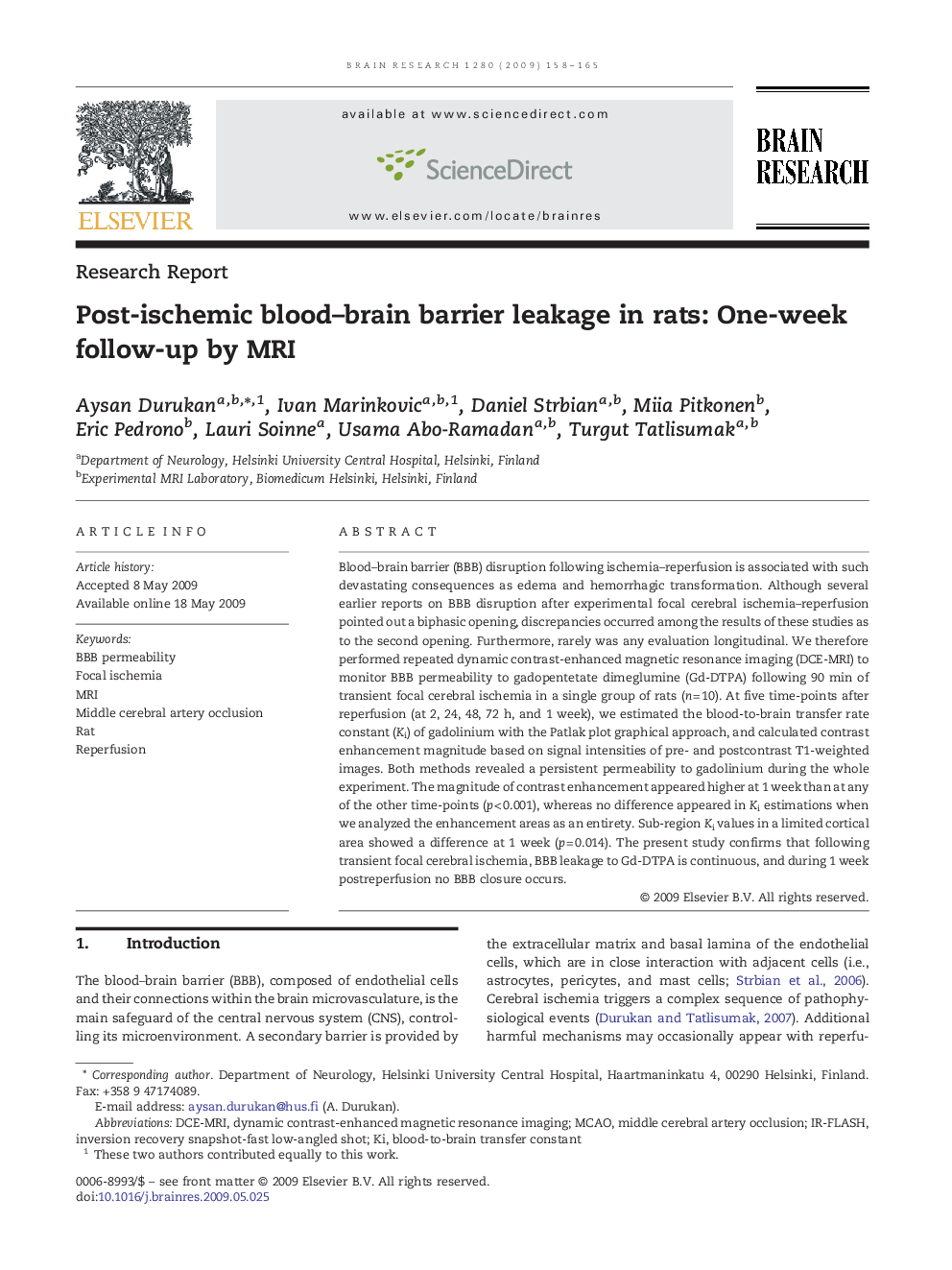| Article ID | Journal | Published Year | Pages | File Type |
|---|---|---|---|---|
| 4328069 | Brain Research | 2009 | 8 Pages |
Blood–brain barrier (BBB) disruption following ischemia–reperfusion is associated with such devastating consequences as edema and hemorrhagic transformation. Although several earlier reports on BBB disruption after experimental focal cerebral ischemia–reperfusion pointed out a biphasic opening, discrepancies occurred among the results of these studies as to the second opening. Furthermore, rarely was any evaluation longitudinal. We therefore performed repeated dynamic contrast-enhanced magnetic resonance imaging (DCE-MRI) to monitor BBB permeability to gadopentetate dimeglumine (Gd-DTPA) following 90 min of transient focal cerebral ischemia in a single group of rats (n = 10). At five time-points after reperfusion (at 2, 24, 48, 72 h, and 1 week), we estimated the blood-to-brain transfer rate constant (Ki) of gadolinium with the Patlak plot graphical approach, and calculated contrast enhancement magnitude based on signal intensities of pre- and postcontrast T1-weighted images. Both methods revealed a persistent permeability to gadolinium during the whole experiment. The magnitude of contrast enhancement appeared higher at 1 week than at any of the other time-points (p < 0.001), whereas no difference appeared in Ki estimations when we analyzed the enhancement areas as an entirety. Sub-region Ki values in a limited cortical area showed a difference at 1 week (p = 0.014). The present study confirms that following transient focal cerebral ischemia, BBB leakage to Gd-DTPA is continuous, and during 1 week postreperfusion no BBB closure occurs.
